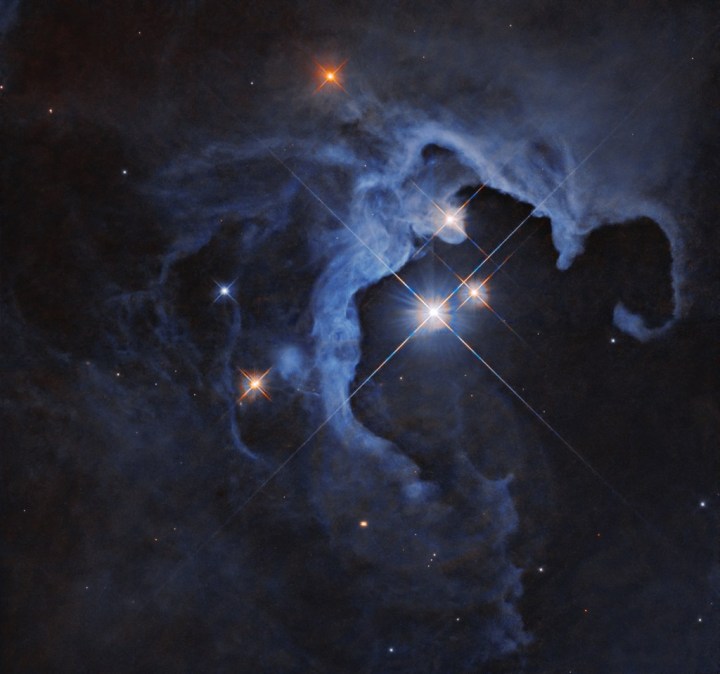
A gorgeous new image from the Hubble Space Telescope shows a triple star system, where three stars are working in tandem to create a reflection nebula. The trio of stars are located 550 light-years away, and include one particular star, HP Tau, that is like a younger version of our sun and will eventually grow up to be a similar hydrogen-fueled star in millions of years’ time.
At the moment, HP Tau is less than 10 million years old, compared to the 4.6 billion year age of the sun. It is currently a type of star called a T Tauri star, which is a variable type of star that changes in brightness over time. There are two reasons that a star will be variable: Either it stays the same brightness, but it appears to be more or less bright from Earth because of factors like dust getting in the way of our view of it, or the star is actually changing its brightness levels over time.
Some variable stars are predictable and change brightness over a fixed period, such as Cepheid variables, which pulsate in a predictable manner with a relationship between their overall brightness and the speed at which the changes in brightness happen. That makes Cepheid variables extremely important in astronomy, as their pulses can be used as mile markers to tell how far away they are — which makes them part of the “cosmic distance ladder,” which is key for cosmology research.
But other stars vary their brightness in unpredictable ways — like the nearby star Betelgeuse, which was once one of the brightest objects in the sky, but whose brightness has fluctuated wildly in recent years. In that case, some astronomers thought that Betelgeuse was changing in brightness because it was coming to the end of its life and was about to go supernova, but more recent research suggests that the star actually produced a cloud of material that blocked some of its light, making it appear dimmer.
As for HP Tau, this star appears to be changing in brightness in both predictable and unpredictable ways: unpredictable because its actual brightness is fluctuating as its grows through the early stage of its life, and predictable because it has large sunspots. As NASA explains: “The random variations may be due to the chaotic nature of a developing young star, such as instabilities in the accretion disk of dust and gas around the star, material from that disk falling onto the star and being consumed, and flares on the star’s surface. The periodic changes may be due to giant sunspots rotating in and out of view.”



